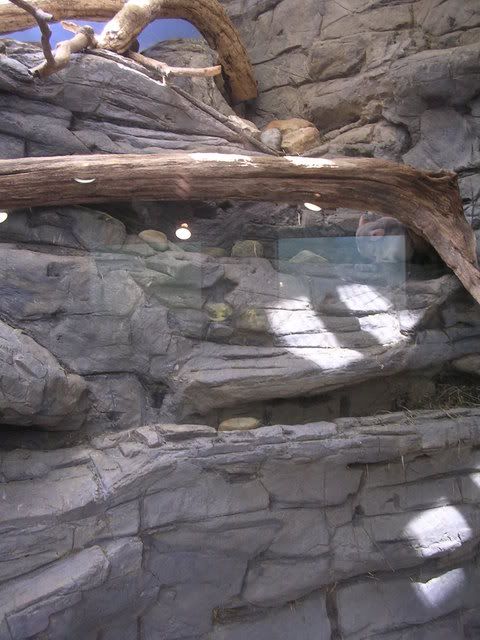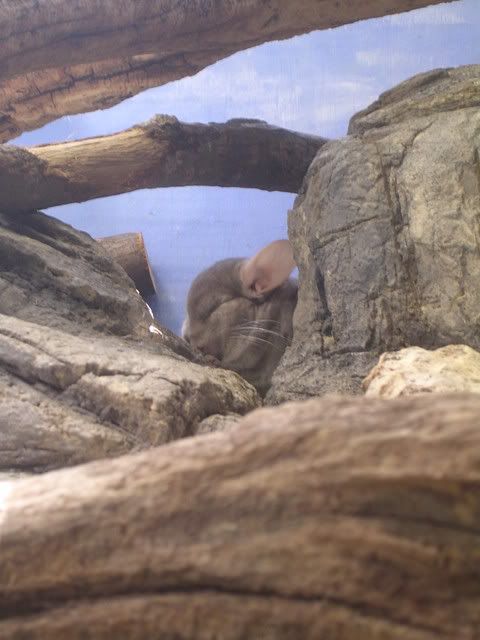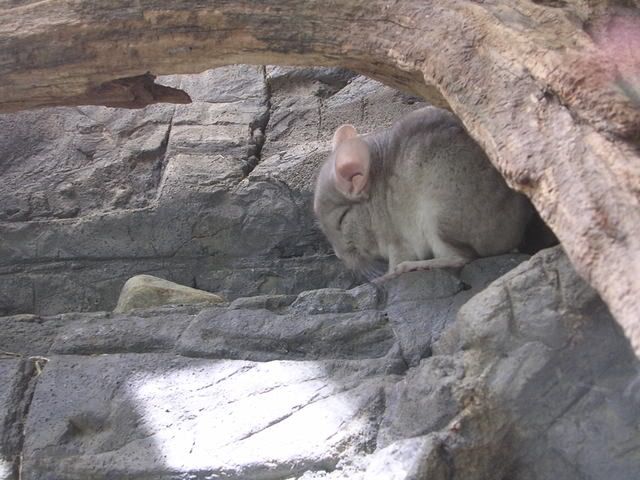This is not true. Chins can regulate the temperature in a small enclosed area. Not sure how they do it, but they do. They can also acclimate to considerably higher temps.
I constantly feel the need to argue this point. Yes, a chin "might" acclimate to higher temperatures, but that's for your convenience and not theirs. My barn got down to 49 degrees the last 2 days. My chins were absolutely spastastic, running, surfing, playing, bright eyed, and bushy tailed. Let that barn go above 70 degrees and they are quiet, sleeping, hiding in their houses, etc. You will never convince me or other experienced chin owners, and I'm going to go out on a limb here and say large ranchers, that 80 degrees is beneficial to a chin.
Whether or not they can acclimate is different from whether we should
force them to do it. As Allison pointed out, a zoo is there to educate. These are not wild chinchillas, these are domesticated chinchillas. Their needs are completely different from a wild chin, therefore, their habitat should reflect that. Yes, throw in the branches and the rocks and so forth, but there's absolutely nothing wrong with a dark green hammock or providing them with the proper, and well known to be safe, environment.
Anything that zoo shows, John Q. Public is going to assume is a-okay when it comes to owning their own chin. We would shred someone who came on here stating they kept their chins outside in those kinds of temperatures, because we (the collective forum, as well as ranchers Tara, and you know that) would disagree that it's okey dokey to keep chins at 80+ degrees just because you get them used to it.
Kellyzoo - Moon (Monika's) offer is a good one. Please take the time to visit with her, see her set up, and see the kind of temperature, feed, watering set usp, etc. that are good and safe for a chin. She's good people and she won't steer you wrong. I think it's wonderful that you are setting up a habitat for a chin and want to educate people on them, but please, educate them in the right way with what is safe for them. They need to be inside in a climate controlled area.
Also, please don't get sucked into the mindset that most zoos have that chins need fruits and vegetables and all other manner of crap foods. They don't. Again, these are
domestic chins. They need a good quality pellet, good quality hay, and fresh water, preferably from hanging bottles, not bowls. Nuts, raisins, dried fruits, fresh fruits, vegetables, overloads of alfalfa hay, etc. are just not good for chins. Zoos will argue this, because they read it on the internet somewhere or they saw a picture of a chin in the wild gnawing on a fig or something (I have no idea what's in that region, just throwing that out there

), but the domesticated chin is not used to a diet loaded with those kinds of foodstuffs. Pellets, hay, and water, that's it. It also makes it a heck of a lot easier to eliminate things if there is a diet related issue causing an illness, than if they have everything but the kitchen sink in the food bowls.






